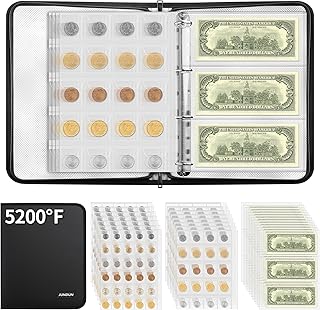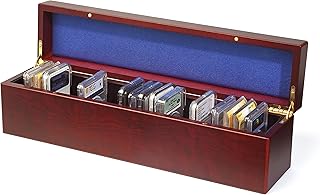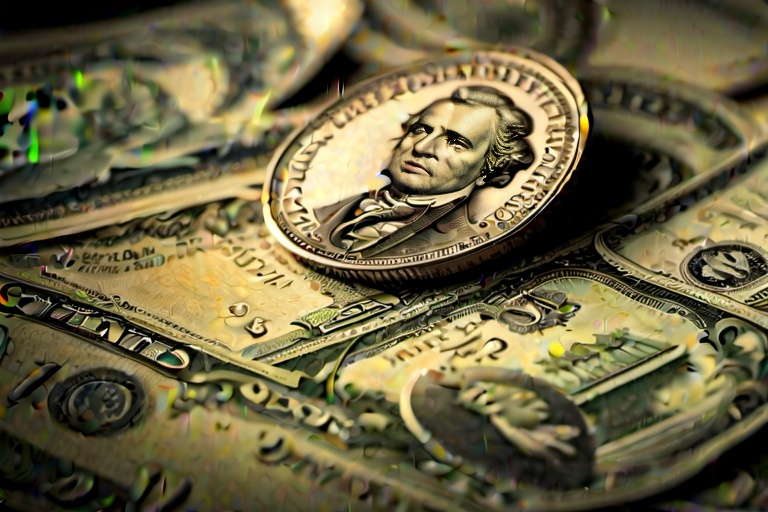Coin collecting is a fascinating hobby that intertwines history, art, and economics. Understanding what makes a coin valuable is an intriguing process, and often, it is not readily apparent why one coin may be worth more than another. Through this guide, we aim to shed light on the factors that contribute to a coin's value and provide insight into some of the United States' most sought-after rare coins. Whether you are an established collector or merely someone with an interest in numismatics, this compilation of valuable and rare coins will be of interest to you.
Coin collecting is a fascinating hobby that intertwines history, art, and economics. Understanding what makes a coin valuable is an intriguing process, and often, it is not readily apparent why one coin may be worth more than another. Through this guide, we aim to shed light on the factors that contribute to a coin's value and provide insight into some of the United States' most sought-after rare coins. Whether you are an established collector or merely someone with an interest in numismatics, this compilation of valuable and rare coins will be of interest to you.
Understanding Coin Rarity and Value
The allure of stumbling upon a rare coin in your loose change or inheriting a piece with hidden value is universal. Rare coins, sometimes found in circulation or passed down as heirlooms, can be quite valuable. It is not uncommon for coins minted at the Denver and San Francisco Mints, denoted by "D" and "S" mintmarks, to be among the more collectible items. Similarly, coins made from precious metals such as silver and gold always hold intrinsic material value, sometimes independent of their numismatic appeal.
Small Cents Worth Big Dollars
One particular area of interest is the small cent category, which includes Indian Head pennies and Wheat pennies. These cents often carry historical significance and collector interest due to their age and the periods they represent. The Indian cent, for instance, was produced during a time when the United States was undergoing significant growth and transformation. Wheat cents, on the other hand, bring back memories of the early 20th century and are emblematic of America's agrarian past.
Key Rare Coins to Know
For those keenly watching their pocket change or evaluating a collection, here's a list of notable rare coins accompanied by their approximate values:
- 1877 Indian Cent: Valued at $750 and up, this coin's low mintage makes it a key rarity.
- 1909-S VDB Lincoln Cent: Fetching upwards of $650, this particular cent carries a notable designer's initials, V.D.B., on its reverse.
- 1914-D Lincoln Wheat Cent: Starting at $175, the Denver-minted Wheat cent from 1914 commands high interest.
- 1955 Lincoln DDO Cent: Doubling on the obverse can drive its value to $1,000 and above.
- 1969-S Lincoln Doubled Die Cent: A dramatic doubling error skyrockets this coin's value over $25,000.
- 1972 Lincoln Doubled Die Cent: Another doubling error, though not as valuable as the '69-S, can be worth $300+.
- 1885 Liberty Nickel: Scarce and desirable, this nickel is worth over $350.
- 1937 3-legged Buffalo Nickel: Missing a front leg due to an overpolishing mistake, values start at $450.
- 1916-D Mercury Dime: This dime has a starting value of around $800 due to its rarity.
- 1901-S Barber Quarter: One of the key rarities in the Barber series, valued at $3,500+.
- 1913-S Barber Quarter: Another significant Barber coin, fetching upwards of $1,100.
- 1916 Standing Liberty Quarter: Starting at $2,800, it's famous for its design and low mintage.
- 1932-D Washington Quarter: The first year of issue, valued starting at $85.
- 1932-S Washington Quarter: Similarly valued to the '32-D, at $80+.
- 1921 Walking Liberty Half Dollar: Worth $125+, it's sought after for its low mintage.
- 1921-D Walking Liberty Half Dollar: The Denver version commands a higher value of $190+.
- 1938-D Walking Liberty Half Dollar: Despite being more common, still worth $50+.
- 1921 Peace Dollar: These dollars are worth about $125+ due to their low mintage.
- Pre-1933 U.S. Gold Coins: These typically start at a value of $150 and can climb significantly higher.
Factors Influencing Coin Values
While the rarity of a coin is a natural starting point in ascertaining its value, other elements are equally critical. The level of collector interest, the coin's condition (often termed its 'grade'), and the historical significance are weighty factors that contribute to a coin's market value. A coin with a higher mintage may still have a substantial price tag if it is in high demand or in a state of exceptional preservation.
To effectively determine a coin's value, it is important for collectors to develop a strong knowledge base. Numismatic literature, reputable coin dealers, and established online resources can be invaluable tools in this regard. Understanding the nuances of grading, mintages, varieties, and errors can greatly enhance one's ability to identify and assess valuable coins.
Refining Your Numismatic Expertise
The market for coins is ever-changing, influenced by economic factors, trends in collecting, and discoveries of new hoards or rarities. To navigate this dynamic field and build a valuable collection, continuous learning is key. Attending coin shows, joining coin clubs, and engaging with other collectors can provide opportunities to see a wide range of coins and learn from others' experiences.
The Joy of Coin Collecting
Collecting coins isn't just about the potential financial rewards; it's also about the joy of discovery, the appreciation of the fine art of minting, and the connection to history that each coin represents. Whether focusing on a specific series of coins, such as Lincoln cents or Mercury dimes, or collecting by theme, such as pieces from historic U.S. mints, the world of coin collecting is rich with possibilities.
Final Thoughts
For enthusiasts and collectors alike, the pursuit of rare coins provides an engaging and often profitable pastime. With a keen eye, anyone can spot a treasure in their everyday change or find a valuable heirloom in an attic chest. Understanding what to look for in coins, from mint marks and dates to errors and condition, paves the way to success in this timeless hobby. Armed with the right knowledge and a passion for numismatics, both novice and experienced collectors can enjoy the unique rewards of this age-old pursuit.
Information for this article was gathered from the following source.




